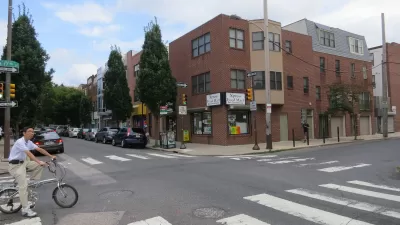The question of whether the largest generation in U.S. history will maintain its lover affair with urban living is either the elephant in the room of the million dollar question.

"A number of demographers, along with economists and real estate consultants, are starting to contemplate what urban cores will look like now that the generation — America’s largest — is cresting," according to an article by Conor Dougherty.
Dougherty launches this investigation from the starting point presented in the work of Dowell Myers, a professor of demography and urban planning at the University of Southern California. Myers published a paper in 2016 noting that American cities reached peak millennial [pdf] in 2015. Planetizen covered the original analysis of Myers's research in two separate articles—one from February 2016 and another from March 2016.
Dougherty looks at rental prices in cities around the country for evidence of one of the key claims made by Myers: that over the next few years, "the growth in demand for urban living is likely to stall."
"Apartment rents in San Francisco, Washington, Denver, Miami and New York are moderating or even declining from a year ago," writes Dougherty while citing data from Zillow.
Acknowledging that the idea that Millennials might depart the city en masse, taking high rents and gentrification with them, is "full of contours and caveats," Dougherty considers a number of opinions from leading thinkers on what will happen to cities as the Millennial Generation comes of age.
FULL STORY: Peak Millennial? Cities Can’t Assume a Continued Boost From the Young

Alabama: Trump Terminates Settlements for Black Communities Harmed By Raw Sewage
Trump deemed the landmark civil rights agreement “illegal DEI and environmental justice policy.”

Study: Maui’s Plan to Convert Vacation Rentals to Long-Term Housing Could Cause Nearly $1 Billion Economic Loss
The plan would reduce visitor accommodation by 25% resulting in 1,900 jobs lost.

Planetizen Federal Action Tracker
A weekly monitor of how Trump’s orders and actions are impacting planners and planning in America.

Wind Energy on the Rise Despite Federal Policy Reversal
The Trump administration is revoking federal support for renewable energy, but demand for new projects continues unabated.

Passengers Flock to Caltrain After Electrification
The new electric trains are running faster and more reliably, leading to strong ridership growth on the Bay Area rail system.

Texas Churches Rally Behind ‘Yes in God’s Back Yard’ Legislation
Religious leaders want the state to reduce zoning regulations to streamline leasing church-owned land to housing developers.
Urban Design for Planners 1: Software Tools
This six-course series explores essential urban design concepts using open source software and equips planners with the tools they need to participate fully in the urban design process.
Planning for Universal Design
Learn the tools for implementing Universal Design in planning regulations.
Caltrans
Smith Gee Studio
Institute for Housing and Urban Development Studies (IHS)
City of Grandview
Harvard GSD Executive Education
Toledo-Lucas County Plan Commissions
Salt Lake City
NYU Wagner Graduate School of Public Service





























